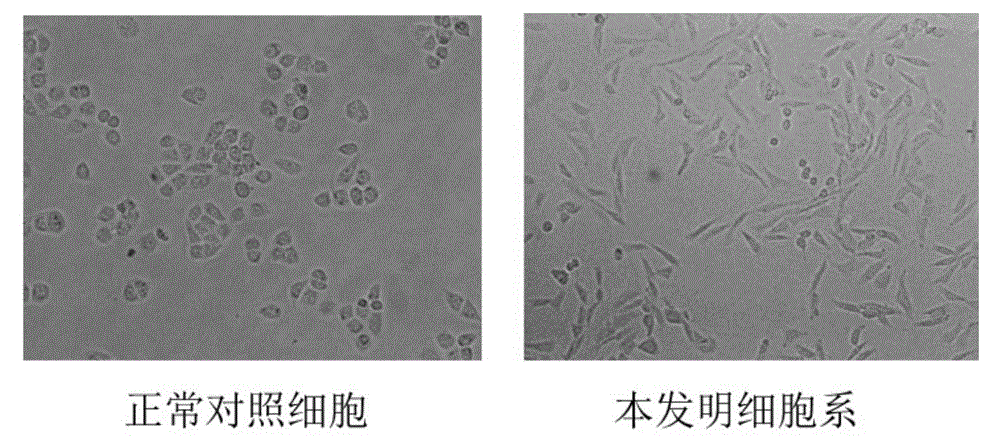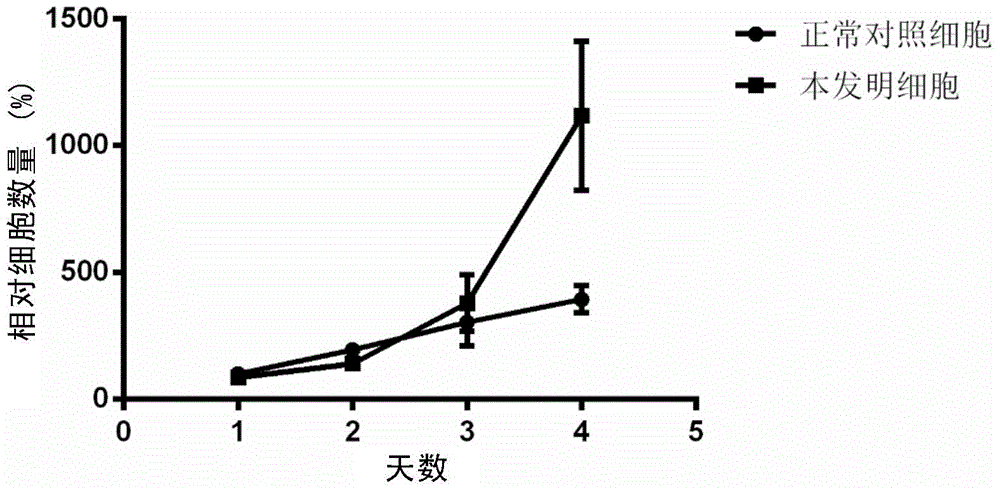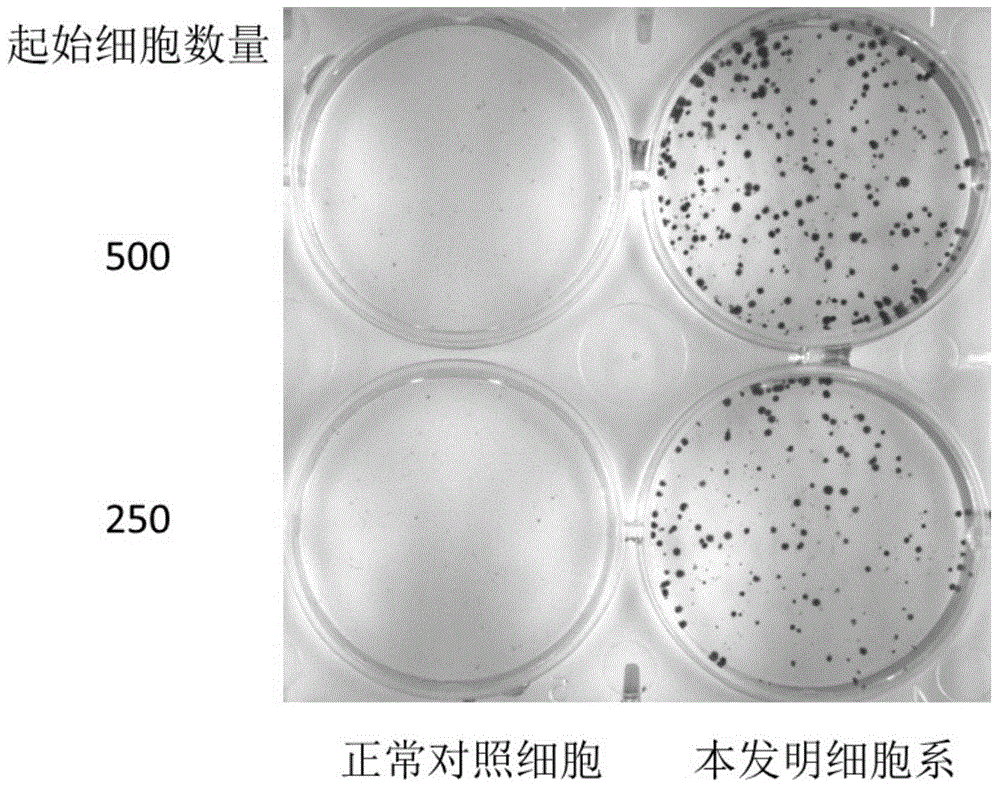Cell model having undergone vicious transformation
A cell and malignant technology, applied in the field of cell biology, can solve the problems of unfavorable large amount of chemicals, insufficient correlation between animal experiments and human body, and large investment.
- Summary
- Abstract
- Description
- Claims
- Application Information
AI Technical Summary
Problems solved by technology
Method used
Image
Examples
Embodiment 1
[0056] Embodiment 1, screening the cells of the present invention
[0057] Take the normal human liver cell line HL-7702 (ATCC), add different concentrations of benzo(a)pyrene (0.01nM, 1nM, 100nM) to the medium for long-term culture, and observe the cells under the microscope every 2-3 days Growth status, including cell shape, survival rate, growth rate, etc. In the screen, it was found that sustained stimulation with 100 nM benzo(a)pyrene resulted in a decrease in cell viability in the short term. Among them, there was a cell line with significant morphological changes, but the cell viability did not decrease, and it also showed stronger growth ability. This phenotypic change still persisted after the withdrawal of benzo(a)pyrene, indicating that the cell Irreversible changes have taken place and transformed into a new cell type with stable traits, which is the cell line obtained by screening in the present invention. The inventor named it "human normal liver cell benzopyre...
Embodiment 2
[0059] Embodiment 2, the morphological change of the cell obtained by screening
[0060] Comparing the cell lines obtained by the aforementioned screening with normal liver cells not treated with benzo(a)pyrene, it was found that the morphology of the cell lines of the present invention has changed significantly. Such as figure 1 As shown in Fig. 1, the morphology changed from round to regular and spindle-shaped cells. This morphological change indicates that the cell has exhibited different cellular characteristics from the source cell, and this is caused by the continuous stimulation of benzo(a)pyrene.
[0061] The above results suggest that the cell line of the present invention can be used as a new cell model for studying how benzo(a)pyrene affects cytoskeleton and morphology.
Embodiment 3
[0062] Embodiment 3, the growth situation of the cell obtained by screening
[0063] The growth of the cell lines obtained from the aforementioned screening was compared with normal liver cells not treated with benzo(a)pyrene. The result is as figure 2 , it was found that the growth rate of the cell line of the present invention was significantly increased, indicating that compared with the source cells, the cell line obtained by screening had abnormally fast growth ability, indicating that the continuous stimulation of benzo(a)pyrene changed the division and proliferation ability of cells.
[0064] The above results show that the cell line screened by the present invention can be used as a new cell model for studying how benzo(a)pyrene affects cell division and proliferation.
PUM
 Login to View More
Login to View More Abstract
Description
Claims
Application Information
 Login to View More
Login to View More - R&D
- Intellectual Property
- Life Sciences
- Materials
- Tech Scout
- Unparalleled Data Quality
- Higher Quality Content
- 60% Fewer Hallucinations
Browse by: Latest US Patents, China's latest patents, Technical Efficacy Thesaurus, Application Domain, Technology Topic, Popular Technical Reports.
© 2025 PatSnap. All rights reserved.Legal|Privacy policy|Modern Slavery Act Transparency Statement|Sitemap|About US| Contact US: help@patsnap.com



